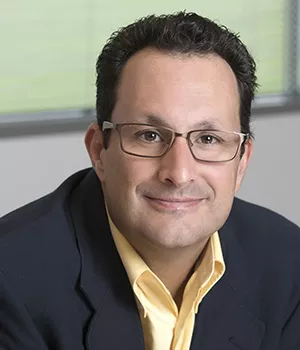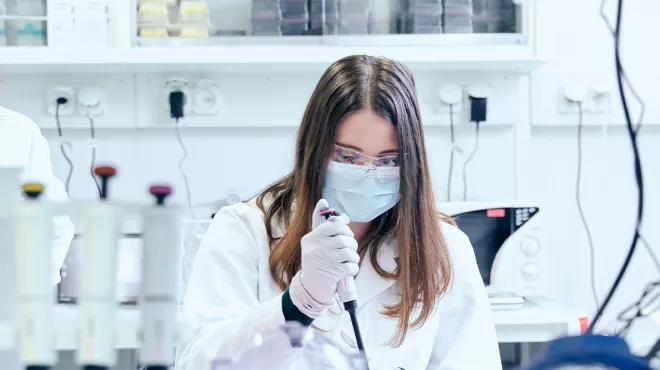Read an important program update below this story.
Members of the global research community have joined forces in unconventional configurations to defeat the COVID-19 pandemic. And they’re working faster than ever before to find solutions.
A new clinical trial illustrates how quickly teams are assembling across industry, academia and government to meet patients’ needs. Planning for the large, Novartis-sponsored trial – which will evaluate the use of hydroxychloroquine for the treatment of hospitalized patients with COVID-19 disease – began on March 20. It’s part of a broader effort to harness science for society at a critical moment. Novartis researchers raced to design the randomized, placebo-controlled study and identify clinical sites as well as an academic lead investigator, compressing six to nine months of work into weeks. By mid-April, the US Food and Drug Administration (FDA) provided the green light for the trial to start.

“We’re all affected by this pandemic,” says Anthony Maffia, Vice President of Regulatory Affairs at Sandoz, the generics and biosimilars division of Novartis. “Anyone and everyone involved with the trial inside and outside the company came into it with the attitude, ‘How can I help?’”
The rigorous Phase III trial aims to provide an answer to the question: Does hydroxychloroquine help hospitalized patients with COVID-19 disease? The drug has garnered intense interest in the medical community after showing promise in preliminary clinical reports – including one that involved co-administration with an antibiotic1 – as well as lab tests.2,3 Yet other reports suggest that it’s not effective.4,5 None of these were randomized, placebo-controlled studies.
Hydroxychloroquine has long been used for the treatment of malaria and certain autoimmune diseases.6 Now it will be put to the test for COVID-19 disease.
The new study is important. But it’s not the only project underway. Novartis is working with the scientific community through a number of initiatives in this time of global crisis. Companies and academic investigators are openly collaborating to identify treatment options for patients. And multistakeholder consortia have assembled in record time to harness the best minds and technologies available to address the pandemic.
A team mobilizes
The patent for hydroxychloroquine expired long ago, and Sandoz has manufactured a generic version of it since 1995. When hydroxychloroquine began garnering attention this year as a potential treatment for COVID-19 disease, Sandoz employees sprinted to make and deliver massive quantities of the drug to support global research efforts. They quickly committed to donate up to 130 million doses of hydroxychloroquine to this end.
In general, Sandoz focuses on providing access to high-quality medicines, not exploring new applications of those medicines. Questions about applying hydroxychloroquine to COVID-19 needed answers, and key leaders soon realized that they could draw on the expertise of other Novartis units to do more.
They turned to the company’s Global Drug Development (GDD) organization, which designs and conducts large clinical trials to determine if new medicines are safe and effective. GDD doesn’t typically focus on generic small-molecule drugs. But there is a pressing, indisputable need for science-based solutions for COVID-19 patients. GDD researchers rolled up their sleeves and began planning a study. They wrestled with dozens of important questions – from which patients to include in the trial to which doses of hydroxychloroquine to use – and leaned on colleagues in Sandoz to understand the medical and regulatory intricacies of the compound.
We have a duty to find out if it’s truly helping patients with COVID-19 disease.
Thomas Lehmann, Senior Global Program Head of the Hydroxychloroquine Global Program Team, Novartis Global Drug Development
“Literally within weeks we have mobilized hundreds of people within the organization to make sure that the drug supply is available and that we’re pursuing the clinical data,” says Maffia.
A Phase III clinical trial is a massive undertaking that involves gathering enough evidence to support health authority approval of a drug for a particular disease. The gold standard is a randomized, placebo-controlled study. And that’s what this team designed.
The plan is to enroll approximately 440 hospitalized patients with COVID-19 disease, who will be randomly assigned to one of three groups. The first group will receive hydroxychloroquine. The second group will receive hydroxychloroquine in combination with azithromycin, an antibiotic therapy. The third group will receive placebo. Patients in all treatment groups are receiving the standard of care for COVID-19. The clinical trial drug supply will be provided by Sandoz.
The Novartis team worked nights and weekends to expedite the study planning, enlisting colleagues from across the organization to assist with the effort. For example, they asked a colleague at the Novartis Institutes for BioMedical Research with deep knowledge of infectious diseases and antiviral drug development to help shape the protocol and identify academic investigators who might be willing to participate in the trial. And from the beginning they aligned with regulators at the FDA, who are also working around the clock to respond to the pandemic.
Following the science

Everyone involved is committed to following the science, wherever it leads. There is no guarantee that the drug will prove effective against COVID-19 infections.
“There is a lot of hope about hydroxychloroquine, but the clinical evidence is sparse,” says Thomas Lehmann, Senior Global Program Head of the hydroxychloroquine global program team in GDD. “We have a duty to find out if it’s truly helping patients with COVID-19 disease.
The trial is emblematic of a groundswell of research taking place around the globe in response to the pandemic. Teams are working across organizations and geographies to repurpose a variety of approved medicines for COVID-19 disease, develop vaccines against the novel pathogen, and discover new drugs with the potential to thwart coronaviruses. The multipronged approach to tackling coronavirus increases the odds of finding solutions for patients. The explosion of ideas and collaborations is also a testament to the power of having a common purpose.
Main image from Adobe Stock: SARS-CoV-2, the virus that causes COVID-19, appears to have spikes when viewed under a microscope.
Important program update: Novartis has made the decision to stop and discontinue its sponsored hydroxychloroquine clinical trial for COVID-19 due to acute enrollment challenges that have made trial completion infeasible. The company believes this decision is in the best interest of responding to the global pandemic. No safety issues have been reported, and there have been no conclusions on efficacy made from the relatively small number of patients enrolled in the study. Novartis wishes to thank all of the patients, their families, investigators and healthcare professionals who played a vital part in our hydroxychloroquine clinical trial for COVID-19. Novartis remains committed to ongoing research and development for COVID-19.
We’re following the science and mobilizing to find solutions for patients with #COVID19



